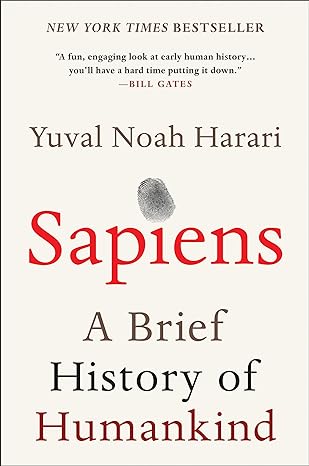
Sumerian Mythology
Originally published in 1944, ‘Sumerian Mythology’ was written by Samuel Noah Kramer, a leading figure in the creation of the modern discipline of Sumerology. He was the first to piece together, decipher, and edit major works of Sumerian mythology and literature. The Sumerians were a non-Semitic, non-Indo-European people who flourished in southern Babylonia from the beginning of the fourth to the end of the third millennium B.C. During this long stretch of time the Sumerians, whose racial and linguistic affiliations are still unclassifiable, represented the dominant cultural group of the entire Near East. The Sumerians were the pragmatic and gifted people who created what was probably the first high civilization in the history of man. This book is an unparalleled compendium of what is known about them.
BEST DEALS
About the Author
Dr. Samuel Noah Kramer, Ph.D. (University of Pennsylvania, 1929; born Simcha Kramer), was a historian, philologist, and Assyriologist, particularly renowned as an expert in the language and history of Sumer. He was Clark Research Professor Emeritus of Assyriology at the University of Pennsylvania, where he was also Curator Emeritus of the Tablet Collections. Dr. Kramer is often credited with the virtual creation of Sumerian cuneiform literature as an academic field, in which he wrote some 30 books for both academic and popular audiences. was a member of the American Oriental Society, Archeological Institute of America, Society of Biblical Literature and American Philosophical Society, which awarded him its John Frederick Lewis Prize.
Read Sample
Chapter 1 : The Scope and Significance of Sumerian Mythology
The science of comparative mythology, like almost all the sciences, exact and inexact, is largely a product of the nineteenth century; its origin and development followed closely upon that of comparative philology, the science devoted to language and literature. The phenomenal growth of comparative philology itself was due primarily to the recognition that both Sanskrit, the language of the oldest sacred literature of the Hindu peoples, as well as Zend, or Old Persian, the language of the oldest sacred literature of the Iranian peoples, were Indo-European languages; that is, they belong to the same family of languages as Greek and Latin. The intense revival of Indo-European philology that followed was therefore based largely on the ancient literatures of the Greeks, Hindus, and Iranians, and this led naturally and directly to a comparative study of the myths and legends as related and revealed in them.
Moreover, toward the end of the first half of the nineteenth century, a new and unexpected field of study was opened to comparative mythology. For it was about this time that the Egyptian hieroglyphic script and the Babylonian cuneiform script were deciphered, and much new mythological material was gradually recovered. What added impetus and excitement to this field of research was the fact that it offered a more scientific approach to the study of the Old Testament. For it soon became evident that some of the Old Testament material was mythological in character, since it presented clear parallels and resemblances to the myths recovered from Egyptian and Babylonian sources. And so the study of comparative mythology, following in the footsteps of philology and linguistics, was no longer restricted to the ancient Indo-Europeans; it now included the ancient Semites and Egyptians.
Approximately at the same time, the growth and development of an almost entirely new science, that of anthropology, proved of fundamental significance for the study of comparative mythology. In all the continents outside of Europe, new peoples and tribes, in various stages of civilization, were being discovered. Students and travellers, scientists and missionaries, studied the new languages, described the strange habits and customs, and wrote down the religious beliefs and practices. Much hitherto unknown mythological material was thus recovered from these more or less primitive peoples, and the science of comparative mythology broadened and expanded accordingly.
And so, roughly speaking, we may divide the source material utilized by comparative mythology into two categories. The first consists of the myths and legends of the ancient cultures such as those of the Hindus, Iranians, and Greeks on the one hand, and of the Hebrews, Babylonians, and Egyptians, on the other; these are revealed in, and derived from, the literatures of these peoples as written down largely in the first millennium B. C. In this group, too, we may class such mythologies as the Scandinavian or Eddie, the Chinese, Japanese, etc., which are derived from literary remains of a much later date. The second category consists of the myths and legends of the so-called primitive peoples discovered in recent centuries, as obtained by word of mouth from living members of those peoples and reported by travellers, missionaries, and anthropologists. It goes without saying that basically, and in the long run, the recent, primitive source material is every bit as important and valuable for comparative mythology and the related sciences as that of the ancient cultures. On the other hand it is quite as obvious that for the history of the progress of our civilization as we see and know it today, it is the tone and temper, the word and spirit of the ancient mythologies, those of the Greeks and Hebrews, of the Hindus and Iranians, of the Babylonians and Egyptians, which are of prime significance. It is the spiritual and religious concepts revealed in these ancient literatures which permeate the modern civilized world.
Still almost entirely unknown to this very moment is Sumerian mythology, the sacred stories of the non-Semitic, non-Indo-European people which in historical times, from approximately 3500 to 2000 B. C., inhabited Sumer, the relatively small land situated between the Tigris and Euphrates Rivers and stretching from the Persian Gulf northward approximately as far as modern Bagdad; a land that may be aptly described as the culture cradle of the entire Near East. Should the reader turn, for example, to Hastings’ Encyclopedia of Religion and Ethics, and examine the very long article on the cosmogonic or creation myths of the world, he will find a large and relatively exhaustive list of peoples, ancient and modern, cultured and primitive, whose cosmogonic concepts are described and analyzed. But he will look in vain for Sumerian cosmogony. Similarly, the collection entitled Mythology of All the Races devotes thirteen volumes to an analysis of the more important mythologies in the world; here, too, however, there will be found few traces of Sumerian mythology. Whatever little is known of Sumerian mythology is largely surmised from the modified, redacted, and in a sense, garbled versions of the Babylonians who conquered the Sumerians toward the very end of the third millennium B. C., and who used the Sumerian stories and legends as a basis and nucleus for the development of their own myths.
But it is a known fact that in the long stretch of time between approximately 3500 and 2000 B. C. it was the Sumerians who represented the dominant cultural group of the entire Near East. It was the Sumerians who developed and probably invented the cuneiform system of writing; who developed a well integrated pantheon together with spiritual and religious concepts which influenced profoundly all the peoples of the Near East; who, finally, created and developed a literature rich in content and effective in form. Moreover, the following significant fact must be borne in mind. By the end of the third millennium B. C. Sumer had already ceased to exist as a political entity and Sumerian had already become a dead language, for by that time Sumer had been overrun and conquered by the Semites, and it is the Semitic Accadian language which gradually became the living, spoken tongue of the land. Nevertheless Sumerian continued to be used as the literary and religious language of the Semitic conquerors for many centuries to come, like Greek in the Roman period and like Latin in the Middle Ages. Indeed for many centuries the study of the Sumerian language and literature remained the basic pursuit of the scribal schools and intellectual and spiritual centers not only of the Babylonians and Assyrians, but also of the many surrounding peoples such as the Elamites, Hurrians, Hittites, and Canaanites. Obviously, then, both because of their content as well as because of their age, the Sumerian mythological tales and concepts must have penetrated and permeated those of the entire Near East. A knowledge of the Sumerian myths and legends is therefore a prime and basic essential for a proper approach to a scientific study of the mythologies current in the ancient Near East, for it illuminates and clarifies to no small extent the background behind their origin and development.
It is this practically unknown Sumerian mythology which I have the privilege of sketching briefly in the pages to follow. The sketch will begin with the myths centering about the creation and organization of the universe and the creation of man. It will continue with the myths of Kur, consisting of three versions of a dragon-slaying motif and of the poem “Inanna’s Descent to the Nether World.” It will conclude with an outline of three interesting miscellaneous myths. All in all, therefore, it is hoped that the reader will obtain a fairly adequate cross-section of Sumerian mythology, a cross-section which, considering the age of the culture involved, is remarkably broad in scope and surprisingly full in detail.
Chapter 2 : Myths of Origins
In the translated Sumerian passages italics indicate doubtful renderings as well as foreign words. Words between parentheses are not in the Sumerian text but are added for purposes of clarification. Words between brackets are broken away and lost from the original, and are supplied by the author. Words between quotation marks represent literal translations of Sumerian words whose fuller implications are too uncertain to permit a more idiomatic rendering.
The most significant myths of a given culture are usually the cosmogonic, or creation myths, the sacred stories evolved and developed in an effort to explain the origin of the universe, the presence of the gods, and the existence of man. And so we shall devote this chapter, by far the longest in our monograph, to the creation theories and concepts current in Sumer in the third millennium B. G. The subject lends itself to treatment under three heads: (1) the creation of the universe, (2) the organization of the universe, (3) the creation of man.
The Creation of the Universe
The major source for the Sumerian conception of the creation of the universe is the introductory passage to a Sumerian poem which I have entitled “Gilgamesh, Enkidu, and the Nether World.” The history of its decipherment is illuminating and not uninteresting. In 1934, when I first tried to decipher the contents, I found that eight pieces belonging to the poem—seven excavated in Nippur and one in Ur—had already been copied and published, thus: Hugo Radau, once of the University Museum, published two from Philadelphia in 1910; Stephen Langdon published two from Istanbul in 1914; Edward Chiera published one from Istanbul in 1924 and two more from Philadelphia in 1934; C. J. Gadd, of the British Museum, published an excellently preserved tablet from Ur in 1930. But an intelligent reconstruction and translation of the myth were still impossible, largely because the tablets and fragments, some of which seemed to duplicate each other without rhyme or reason and with but little variation in their wording, could not be properly arranged. In 1936, after I had sent off to the Revue d’assyriologie my first translations of the myth “Inanna’s Descent to the Nether World”, I decided to make a serious effort to reconstruct the contents of the poem, which obviously seemed to contain a charming and significant story. And it was then that I came upon the clue which enabled me to arrange the pieces in their proper order.
This clue crystallized from an effective utilization of two stylistic features which characterize Sumerian poetry. The first is one which ranks very low in the scale of artistic technique but which from the point of view of the decipherer is truly a boon. It may be described as follows. When the poet finds it advisable to repeat a given description or incident, he makes this repeated passage coincide with the original to the very last detail. Thus when a god or hero orders his messenger to deliver a message, this message, no matter how long and detailed, is given twice in the text, first when the messenger is instructed by his master, and a second time when the message is actually delivered. The two versions are thus practically identical, and the breaks in the one passage may be restored from the other.
As for the second stylistic feature, it may be thus sketched. The Sumerian poet uses two dialects in his epic and mythic compositions, the main dialect, and another known as the Emesal dialect. The latter resembles the main dialect very closely and differs only in showing several regular and characteristic phonetic variations. What is more interesting, however, is the fact that the poet uses this Emesal dialect in rendering the direct speech of a female, not male, deity; thus the speeches of Inanna, queen of heaven, are regularly rendered in the Emesal dialect. And so, on examining carefully the texts before me, I realized that what in the case of several passages had been taken to be a mere meaningless and unmotivated duplication, actually contained a speech of the goddess Inanna in which she repeats in the Emesal dialect all that the poet had previously described in narrative form in the main dialect. With this clue as a guide I succeeded in piecing together the first part of this poem; this was published in 1938. The latter half of the poem still remained largely unintelligible, and even the first and published part had several serious breaks in the text. In 1939 I found in Istanbul a broken prism inscribed with the poem. And in the course of the past year I identified and copied 7 additional pieces in the University Museum at Philadelphia. As a result we now have 16 pieces inscribed with the poem; over two hundred and fifty lines of its text can now be intelligently reconstructed and, barring a passage here and there, be correctly translated.
Plate VII. Gods and the Nether World
One of the more remarkable contributions to art made by Mesopotamia is the cylinder seal. Invented primarily for the purpose of identifying and safeguarding ownership of goods shipped or stored, it came to be used in time as a kind of signature for legal documents. The procedure consisted merely of rolling the cylinder over wet clay and thus impressing the seal’s design upon it. It is the contents of these designs engraved by the seal-cutters on the stone cylinders which are of considerable value for our study of Sumerian mythology. Especially is this true of the cylinder seals current in Sumer in the latter half of the third millennium B. C., not a few of whose designs are religious and mythological in character.
The upper design clearly attempts to portray a more or less complicated mythological story. Three of the deities can be identified with reasonable certainty. Second from the right is the water-god Enki, with the flowing streams of water and the swimming fishes. Immediately behind him is his Janus-faced messenger Isimud, who plays an important role in several of our Enki myths. Seemingly rising out of the lower regions is Utu, the sun-god, with his saw-knife and fiery rays. The female figure standing on top of the mountain, near what seems to be a rather desolate tree, may perhaps be Inanna. If the figure to the left with bow in hand is intended to be Gilgamesh, we have in this design most of the protagonists of the tale “Gilgamesh, Enkidu, and the Nether World.” However, it is to be noted that Enkidu is missing, and Isimud, who is pictured in the design, plays no part in the story. And so any close connection between the design and the epic tale is improbable.
In the central design none of the figures can be identified with reasonable certainty. In the left half of the picture we note a deity who seems to be rising out of the lower regions and is presenting a macelike object to a goddess. To the left is a god, perhaps Gilgamesh, who seems to be chopping down a tree whose trunk is bent to a curve. The right half of the design seems to depict a ritual scene.
The lower design may illustrate graphically the meaning of such a phrase as, “The nether world has seized him”. In the right half of the scene we note a god actually within a flaming mountain (in Sumerian the word meaning “mountain” is the word used regularly for “nether world”). To the right of the mountain is a god who may be putting it to flame with a torch. Behind this deity is a goddess with fiery rays and ring who may perhaps be identified as Inanna. The left half of the design portrays a god holding a bull-man by the tail; both are inside a mountain.
(Reproduced, by permission of the Macmillan Company, from Henri Frankfort, Cylinder Seals (London, 1939), plates XIXa, XXIa, and XVIIIj.)
Plate VII
Gods and the Nether World
The story of our poem, briefly sketched, runs as follows: Once upon a time there was a huluppu-tree, perhaps a willow; it was planted on the banks of the Euphrates; it was nurtured by the waters of the Euphrates. But the South Wind tore at it, root and crown, while the Euphrates flooded it with its waters. Inanna, queen of heaven, walking by, took the tree in her hand and brought it to Erech, the seat of her main sanctuary, and planted it in her holy garden. There she tended it most carefully. For when the tree grew big, she planned to make of its wood a chair for herself and a couch.
Years passed, the tree matured and grew big. But Inanna found herself unable to cut down the tree. For at its base the snake “who knows no charm” had built its nest. In its crown, the Zu-bird—a mythological creature which at times wrought mischief—had placed its young. In the middle Lilith, the maid of desolation, had built her house. And so poor Inanna, the light-hearted and ever joyful maid, shed bitter tears. And as the dawn broke and her brother, the sun-god Utu, arose from his sleeping chamber, she repeated to him tearfully all that had befallen her huluppu-tree.
Now Gilgamesh, the great Sumerian hero, the forerunner of the Greek Heracles, who lived in Erech, overheard Inanna’s weeping complaint and chivalrously came to her rescue. He donned his armour weighing fifty minas—about fifty pounds—and with his “ax of the road,” seven talents and seven minas in weight—over four hundred pounds—he slew the snake “who knows no charm” at the base of the tree. Seeing which, the Zu-Bird fled with his young to the mountain, and Lilith tore down her house and fled to the desolate places which she was accustomed to haunt. The men of Erech who had accompanied Gilgamesh now cut down the tree and presented it to Inanna for her chair and couch.
What did Inanna do? Of the base of the huluppu-tree she made an object called the pukku (probably a drum), and of its crown she made another related object called the mikku (probably a drumstick), and gave them both to Gilgamesh, evidently as a reward for his gallantry. Follows a passage of twelve lines describing Gilgamesh’s activity with these two objects whose meaning I am still unable to penetrate, although it is in perfect shape. When our story becomes intelligible again, it continues with the statement that “because of the cry of the young maidens” the pukku and the mikku fell into the nether world, evidently through a hole in the ground. Gilgamesh put in his hand to retrieve them but was unable to reach them; he put in his foot but was quite as unsuccessful. And so he seated himself at the gate of the nether world and cried with fallen face:
My pukku, who will bring it up from the nether world?
My mikku, who will bring it up from the “face” of the nether world?












